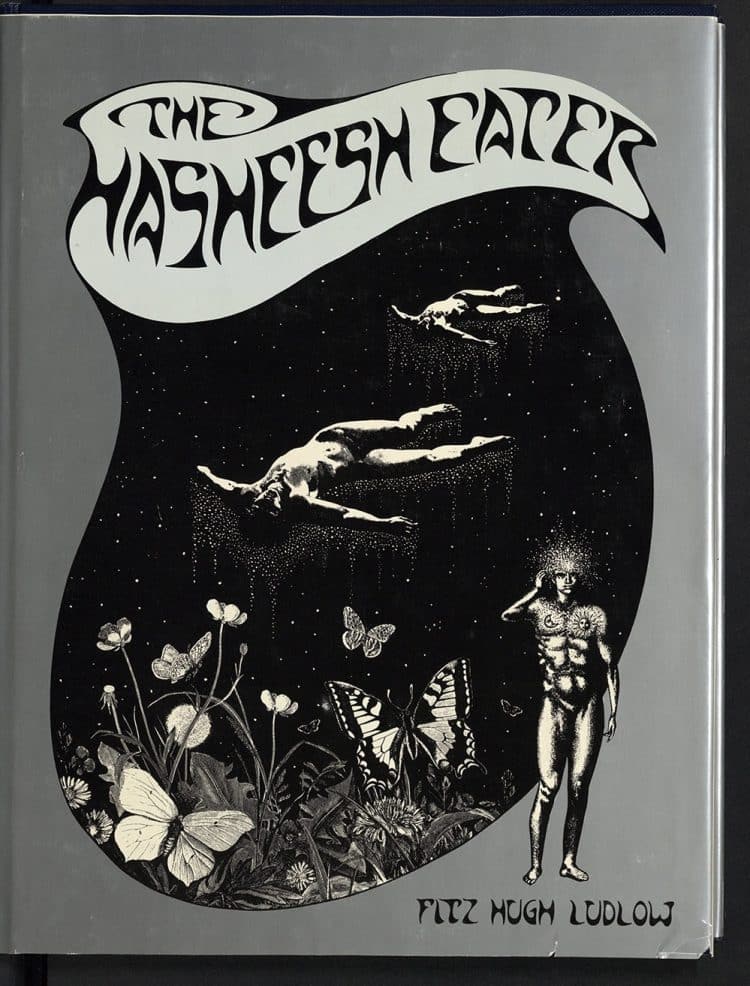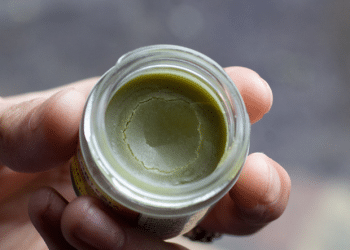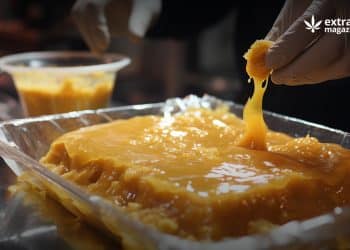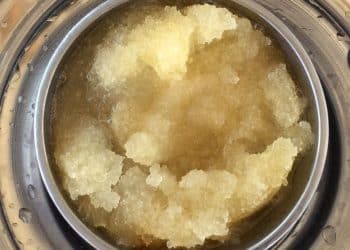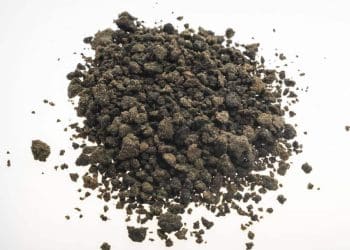As you make your way through the annals of cult literature, autobiographical accounts of the use of mind-altering or mind-enhancing plants or substances derived from plants offer an unabashed, voyeuristic view into the user’s psychological and physiological experiences.
The paragons include Terence McKenna’s Food of the Gods [1], Hunter S. Thompson’s Fear and Loathing in Las Vegas [2], William S. Burroughs’s Junkie: Confessions of an Unredeemed Drug Addict [3], and Fitz Hugh Ludlow’s The Hasheesh Eater [4].
Each portrait spans and illustrates a different time and scene when confessed discussions of the ramifications of ingesting mind-altering substances were as unusual as they were novel. Magnificently, McKenna described Ludlow as having begun “a tradition of pharmo-picaresque literature that would find later practitioners in William Burroughs and Hunter S. Thompson.… Part genius, part madman, Ludlow lies halfway between Captain Ahab and P.T. Barnum, a kind of Mark Twain on hashish.” [1]
While Ludlow’s manuscript describes his personal expedition, hashish eating goes back hundreds of years at a minimum. Some credit the Hashshashin, a once derogatory moniker for Nizari Ismaili Muslims also known as Assassins. [5] Rumor has suggested that the Hashshashin ingested hashish to fuel their battle rage and spark their valor. But as Martin Booth points out in Cannabis: A History, “hashish does not produce any mental state that would incite either violence or brutal murder.” [5]
For many centuries, hashish was traditionally eaten and not smoked. Some reports point to the 19th century as the dawn of smoking hashish via African trendsetters. [6] Hashish eating, however, was still a popular ingestion method in neo-modernized 19th century geographies like Paris and San Francisco. In 1895, a San Francisco Call article discussed the cultivation of Cannabis sativa in California. The hashish was mixed with edible seeds (perhaps nigella), butter, and honey. In true fear-mongering form, the article relates the “terrible” after-effects of eating hashish. It also reports that a hashish product common to the Middle East makes “fellows become as wild beasts and run amuck.” And on par with modern tales of Flakka, the column yarns about people who “grow so wild that they…literally tore their horses and camels to pieces and devoured the flesh while the animals were yet alive.” (I checked… this wasn’t a Hearst publication.)
In France, the Club des Hashischins in Paris provided a forum for French aesthetes who utilized the effects of hashish eating to provoke more engaging conversation. A tempting African product called dawamesk, containing hashish, cinnamon, clove, cardamom, nutmeg, orange peel, butter, and pistachios provided a terpene-laden ambrosia that the salon-goers consumed.
Interestingly, this epoch in France noted interest in the use of hashish for medicinal purposes, such as for the treatment of the plague and typhoid fever. The French physician Louis Aubert-Roche advocated that hashish in the form of dawamesk, consumed with coffee, cured the plague in 7 of 11 patients. [7] Doctor Jacques-Joseph Moreau also hypothesized that hashish could thwart mental illness. [8]
The allure of hashish has transcended time, whether eaten or smoked. Today, this is no more evident than in the craft of Frenchy Cannoli and other Master Hashishins. As a youth, Cannoli yearned for and dreamt about exotic adventures like those described in books by Rudyard Kipling and Sir Richard Francis Burton. These stories begat dreams of adventures in countries that just so happened to have hashish cultures. “I was primed,” Cannoli explained, “and when I smoked my first joint of Lebanese, it was like stepping inside these stories, the burst of this exotic and totally foreign terpene profile was all I needed to make my childhood dreams into a reality.” [9]
Some markets (like Pennsylvania) don’t yet sell hash. Given the product’s time-honored elegance, its captivating and enigmatic history, the formation of a cool new terpene, and humankind’s rather primeval desire for cannabis in this form, we’ll continue to spark the conversation, doing our part to preserve tradition.
References
- McKenna, T. Food of the Gods: The Search for the Original Tree of Knowledge. Bantam; 1992.
- Thompson, H. Fear and Loathing in Las Vegas. Random House; 1971.
- Burroughs, W. Junkie: Confessions of an Unredeemed Drug Addict. Ace Books; 1953.
- Ludlow, F. The Hasheesh Eaters. Harper & Brothers; 1857.
- Booth, M. Cannabis: A History. Macmillan; 2015.
- Chasteen, J. Getting High: Marijuana Through the Ages. Rowman & Littlefield; 2016.
- Aubert-Roche, L. De la peste, ou Typhus d’Orient. 1840.
- Moreau, J. Du Hachisch Et De L’aliénation Mentale: Études Psychologiques. Nabu Press; 1845.
- Lupoi, J. The Cannabis Terpene Experience. Mace Media Group; 2020.
Image Credit: Harvard.edu
